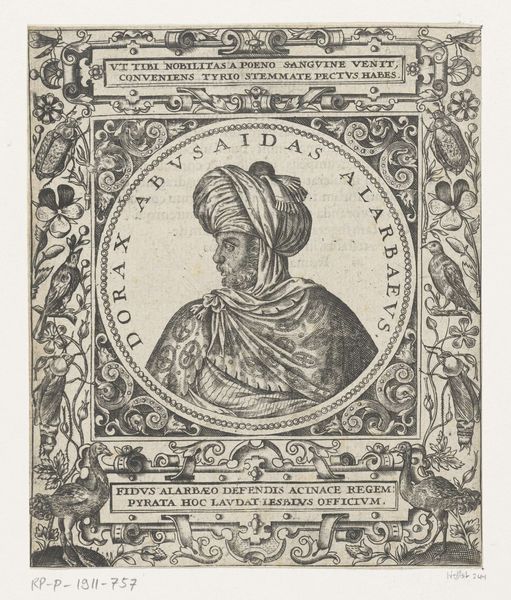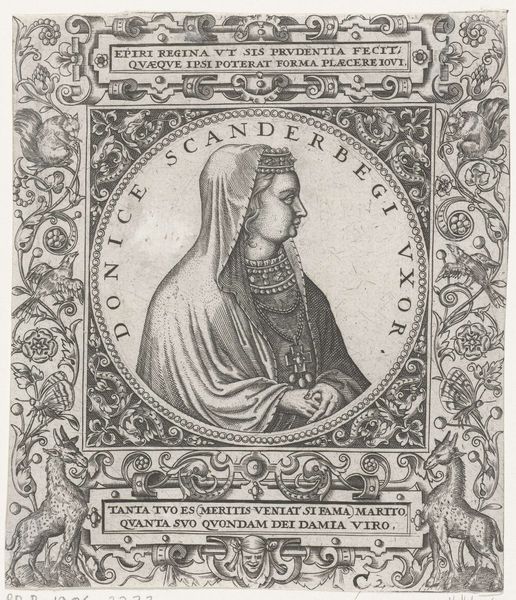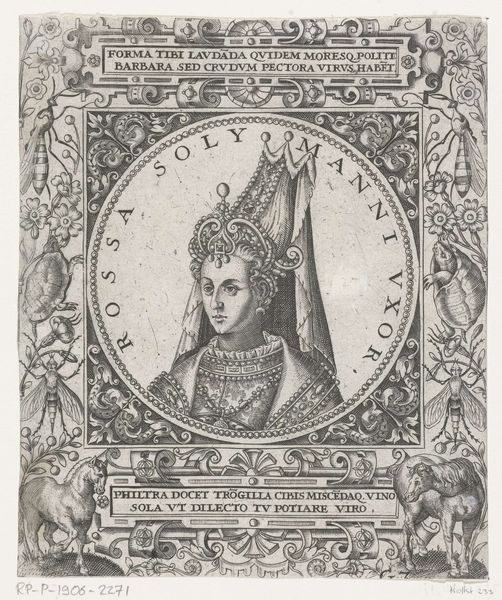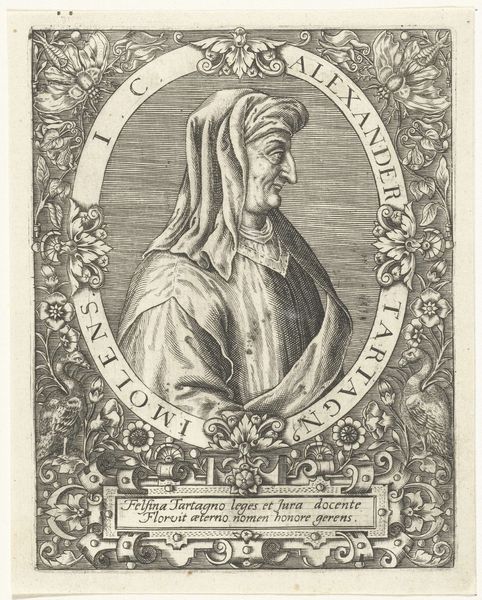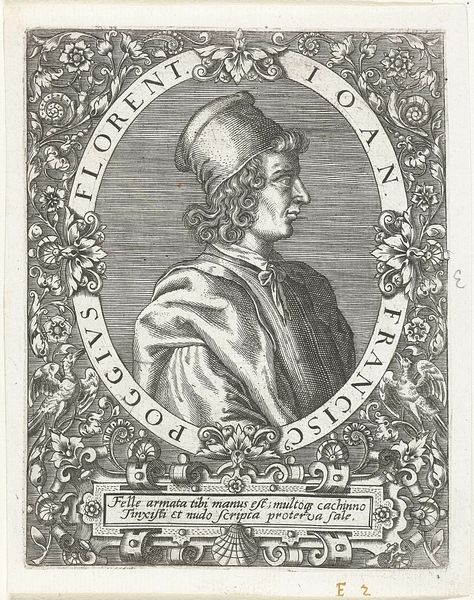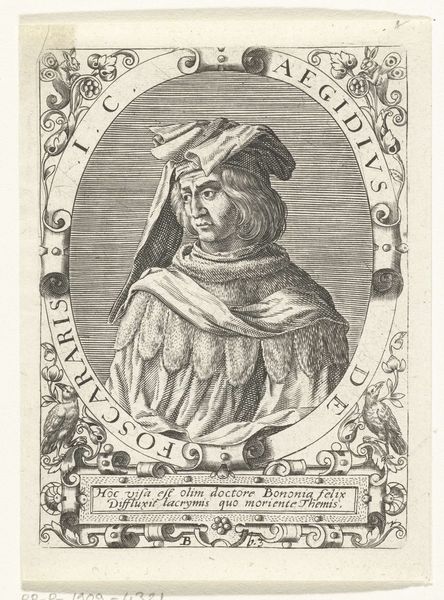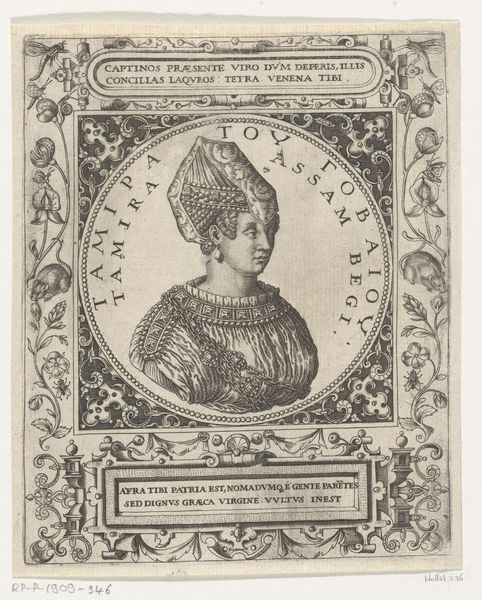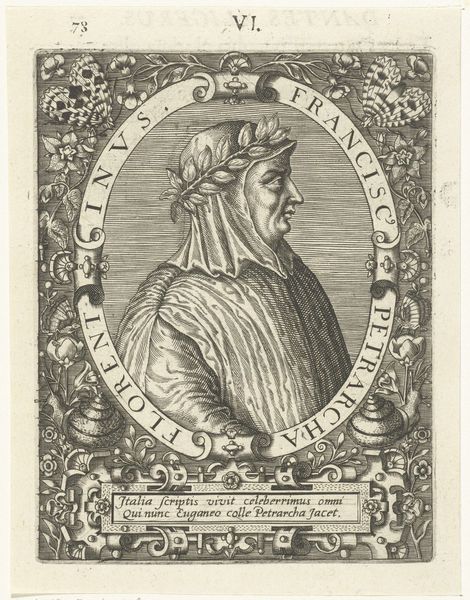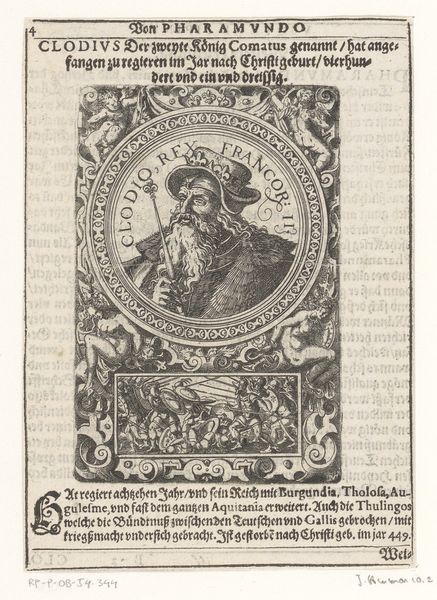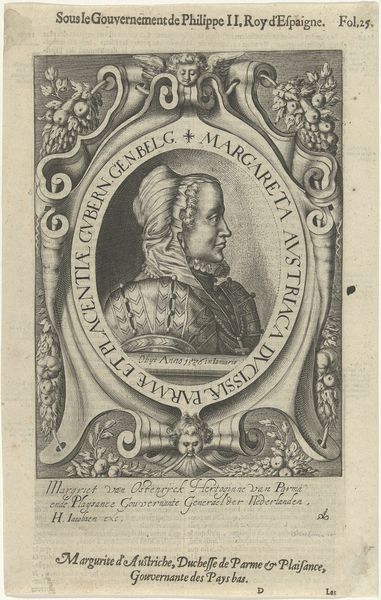
print, engraving
# print
#
mannerism
#
history-painting
#
engraving
Dimensions: height 157 mm, width 125 mm
Copyright: Rijks Museum: Open Domain
Curator: This engraving, dating back to 1596, is a portrait of Sultana Manto, created by Theodor de Bry. The work, a remarkable example of mannerism, can be found in the Rijksmuseum. It’s a beautiful study in contrasts, really, the precision of the engraving against the almost dreamlike quality of the subject. Editor: The hat—no, that whole headdress, really—completely steals the show. It’s this gravity-defying confection of fabric and jewels. It feels like it could tip her over, yet she wears it with such regal poise. There’s a haunting kind of melancholia about it, like she’s present, but somehow, also… elsewhere. Curator: Indeed. Consider the social context of the time. Manto was not just any woman; she was likely a powerful figure, her image serving a potent political function. These portraits, circulated as prints, solidified and projected power but also fueled Western fascination, and frankly, anxieties about the "exotic" Orient. The style, known as mannerism, employed elongated forms and exaggerated details to heighten the drama and underscore status. It made power very, very visible. Editor: Visible, yes, but also… vulnerable, in a way. Look at her expression, it's difficult to know anything certain about what she thought or felt, but her gaze avoids our own, suggesting both guardedness and perhaps, a hint of resignation. The details of the engraving draw us in; we begin to read the textures and patterns on her headpiece; these patterns also separate her. And notice the frame? It almost becomes another kind of ornate cage, encasing her image and projecting a European understanding of who she might be. Curator: A pertinent observation. The frame serves as both decoration and symbolic barrier. By studying it, we discover some classical figures intertwined with botanic motifs and heraldic cartouches. The intention seems to suggest some intellectual kinship, to translate the figure into Western eyes by situating her within a frame of familiar signs. But it is exactly these translations, with all their implied distortions, that reveals how complex power relationships are encoded in something that appears merely ornamental. Editor: Exactly! And isn't that the enduring magic of art? These old engravings seem simple enough, but hold stories inside like old relics and invite you to enter new dimensions to feel, in some visceral manner, the people, lives and history which have come before us. I feel changed after really seeing her. Curator: And that is why such artworks as the portrait of Sultana Manto is essential and continues to fascinate and stimulate meaningful and urgent conversation centuries after it was created.
Comments
No comments
Be the first to comment and join the conversation on the ultimate creative platform.
